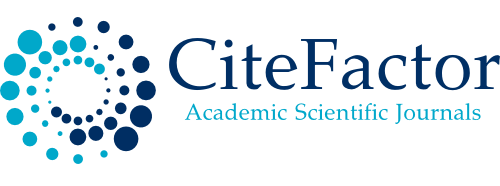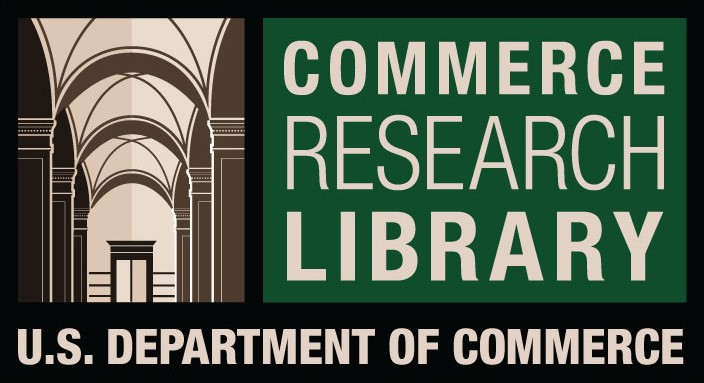Socially Responsible Human Resource Management Practices from Employees’ Perspective: A Study in a Malaysian GLC
DOI:
https://doi.org/10.61841/y2sa0g21Keywords:
Socially Responsible Human Resource Management, Employees’ Perception, Human Resource Management, Andrich Rating Scale Model, Linear Scale TransformationAbstract
Socially responsible human resource management (SRHRM) is a corporate social responsibility directed towards employees in the organization. Increasing awareness on the concept of SRHRM has led to a proliferation of studies documenting the positive effect of SRHRM on employee performance. However, empirical work on SRHRM in emerging economies is still limited. This article aims to fill this knowledge gap by showing the extent to which SRHRM practices are being implemented in the context of Malaysia. Most studies on socially responsible practices of organizations in Malaysia focused on external social responsibilities and the environment. Few organizations focused on socially responsible practices towards their employees. This research utilizes a Likert-type self-administered instrument to capture employees’ perception of SRHRM practices in a government-linked company in Malaysia. SRHRM practices in this study include eight dimensions: staffing, training, employee relations, communication, diversity and equal opportunities, compensation, occupational safety and health, as well as work-family balance. A total of 3,928 participants were included in the study. The instrument was validated using Andrich Rating Scale Model. Overfit and underfit items were subsequently removed. As a result, the unidimensionality of SRHRM subscales is established. Linear Scale Transformation and Rasch Person Plot were adapted to illustrate the extent of Employees’ perception of SRHRM subscales. Results show high subscales’ scores for each of the eight dimensions, indicating a positive perception of SRHRM practices in the organization. The results illustrate that socially responsible policies are being implemented in a Malaysian organization. More importantly, employee perception, and the interpretation of the policies into practices by human resources are vital for organization performance. This study also contributes to further validation of SRHRM measures used in previous literature.
Downloads
References
1. Abdul Halim, M. N., Abdul Halim, H., & Amran, A. (2017). The Influence of CSR Practices on CSR-HR Capabilities and Organizational Performance among Malaysian Public Listed Company. International Journal of Scientific & Engineering Research, 8(10), 577-589.
2. Amran, A., Zain, M. M., Sulaiman, M., Sarker, T., & Ooi, S. K. (2013). Empowering Society for Better Corporate Social Responsibility (Csr): The Case of Malaysia. Kajian Malaysia, 31(1), 57-78.
3. Andrich, D. (1978). A Rating Formulation for Ordered Response Categories. Psychometrika, 43(4), 561- 573.
4. Barrena-Martinez, J., López-Fernández, M., & Romero-Fernández, P. M. (2018). The link between socially responsible human resource management and intellectual capital. Corporate Social Responsibility and Environmental Management, 26(1), 71-81. doi:10.1002/csr.1658
5. Barrena-Martínez, J., López-Fernández, M., & Romero-Fernández, P. M. (2017). Towards a configuration of socially responsible human resource management policies and practices: findings from an academic consensus. The International Journal of Human Resource Management, 1-37. doi:10.1080/09585192.2017.1332669
6. Bursa Malaysia. (2009). Bursa Malaysia. Retrieved from http://bursa.listedcompany.com/misc/ar2009/pdf/Bursa%20Malaysia%20Berhad%202009.pdf
7. Celma, D., Martínez-Garcia, E., & Coenders, G. (2012). Corporate Social Responsibility in Human Resource Management: An analysis of common practices and their determinants in Spain. Corporate Social Responsibility and Environmental Management, 21(2), 82-99. doi:10.1002/csr.1301
8. Celma, D., Martinez-Garcia, E., & Raya, J. M. (2018). Socially responsible HR practices and their effects on employees’ wellbeing: Empirical evidence from Catalonia, Spain. European Research on Management and Business Economics, 24(2), 82-89. doi:10.1016/j.iedeen.2017.12.001
9. Chan, T. J., & Mohd Hasan, N. A. (2016). Determinants of Corporate Social Responsibility (CSR) and Intrinsic Job Motivation: A Case of Malaysian Banking Company. Malaysian Journal of Social Sciences and Humanities, 1(2), 25-35.
10. Diaz-Carrion, R., López-Fernández, M., & Romero-Fernandez, P. M. (2017). Developing a sustainable HRM system from a contextual perspective. Corporate Social Responsibility and Environmental Management, 25(6), 1143-1153. doi:10.1002/csr.1528
11. Dupont, C., Ferauge, P., & Giuliano, R. (2013). The Impact of Corporate Social Responsibility on Human Resource Management: GDF SUEZ’s Case. International Business Research, 6(12). doi:10.5539/ibr.v6n12p145
12. Guest, D. E. (2017). Human resource management and employee well-being: towards a new analytic framework. Human Resource Management Journal, 27(1), 22-38. doi:10.1111/1748-8583.12139
13. Kendel, F., Wirtz, M., Dunkel, A., Lehmkuhl, E., Hetzer, R., & Regitz-Zagrosek, V. (2010). Screening for depression: Rasch analysis of the dimensional structure of the PHQ-9 and the HADS-D. J Affect Disord, 122(3), 241-246. Retrieved from https://www.ncbi.nlm.nih.gov/pubmed/19665236. doi:10.1016/j.jad.2009.07.004
14. Lechuga Sancho, M. P., Martínez-Martínez, D., Larran Jorge, M., & Herrera Madueño, J. (2018). Understanding the link between socially responsible human resource management and competitive
performance in SMEs. Personnel Review, 47(6), 1211-1243. doi:10.1108/pr-05-2017-0165
15. López-Fernández, M., Romero-Fernández, P. M., & Aust, I. (2018). Socially Responsible Human Resource Management and Employee Perception: The Influence of Manager and Line Managers. Sustainability, 10(12). doi:10.3390/su10124614
16. Mansor, F., Baba, I., & Marzuki, N. A. (2016). The Role of Human Resource Department in Corporate Social Responsibility: A Case Study of Five Prominent Hotels in Penang Island, Malaysia. Malaysian Journal of Social Sciences and Humanities, 1(2), 45-53.
17. Mayer, J. P. (2014). Applied Measurement with Jmetrik. New York and London: Routledge.
18. Newman, A., Miao, Q., Hofman, P. S., & Zhu, C. J. (2015). The impact of socially responsible human resource management on employees' organizational citizenship behaviour: the mediating role of organizational identification. The International Journal of Human Resource Management, 27(4), 440-455. doi:10.1080/09585192.2015.1042895
19. Obrad, C., & Gherheș, V. (2018). A Human Resources Perspective on Responsible Corporate Behavior. Case Study: The Multinational Companies in Western Romania. Sustainability, 10(3). doi:10.3390/su10030726
20. Sahari, S., Nichol, E. O., & Yusof, S. M. (2018). Stakeholders’ Expectations on Human Capital Disclosure vs. Corporate Reporting Practice in Malaysia. International Business Research, 12(1). doi:10.5539/ibr.v12n1p148
21. Shen, J., & Benson, J. (2016). When CSR Is a Social Norm. Journal of Management, 42(6), 1723-1746. doi:10.1177/0149206314522300
22. Shen, J., & Zhu, C. J. (2011). Effects of socially responsible human resource management on employee organizational commitment. The International Journal of Human Resource Management, 22(15), 3020- 3035. doi:10.1080/09585192.2011.599951
23. Stankevičiūtė, Ž., & Savanevičienė, A. (2018). Designing Sustainable HRM: The Core Characteristics of Emerging Field. Sustainability, 10(4798), 1-23. doi:10.3390/su10124798
24. Teo, T. (2011). Towards greater precision in latent construct measurement: What's the Rasch? British Journal of Educational Technology, 42(6), E122-E124. doi:10.1111/j.1467-8535.2011.01213.x
25. Wright, P. M., & McMahan, G. C. (2011). Exploring human capital: putting ‘human’ back into strategic human resource management. Human Resource Management Journal, 21(2), 93-104. doi:10.1111/j.1748- 8583.2010.00165.x
Downloads
Published
Issue
Section
License

This work is licensed under a Creative Commons Attribution 4.0 International License.
You are free to:
- Share — copy and redistribute the material in any medium or format for any purpose, even commercially.
- Adapt — remix, transform, and build upon the material for any purpose, even commercially.
- The licensor cannot revoke these freedoms as long as you follow the license terms.
Under the following terms:
- Attribution — You must give appropriate credit , provide a link to the license, and indicate if changes were made . You may do so in any reasonable manner, but not in any way that suggests the licensor endorses you or your use.
- No additional restrictions — You may not apply legal terms or technological measures that legally restrict others from doing anything the license permits.
Notices:
You do not have to comply with the license for elements of the material in the public domain or where your use is permitted by an applicable exception or limitation .
No warranties are given. The license may not give you all of the permissions necessary for your intended use. For example, other rights such as publicity, privacy, or moral rights may limit how you use the material.









